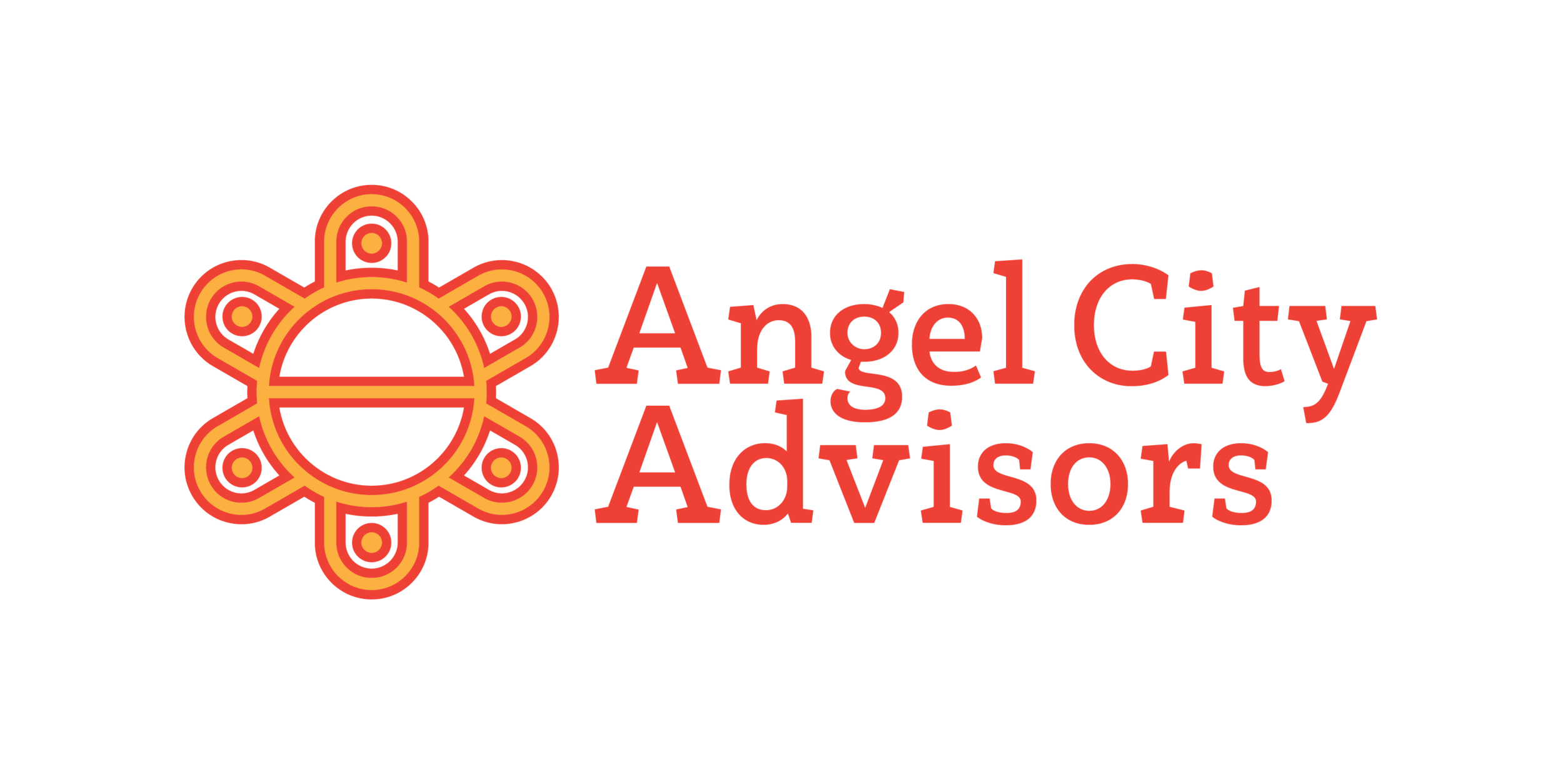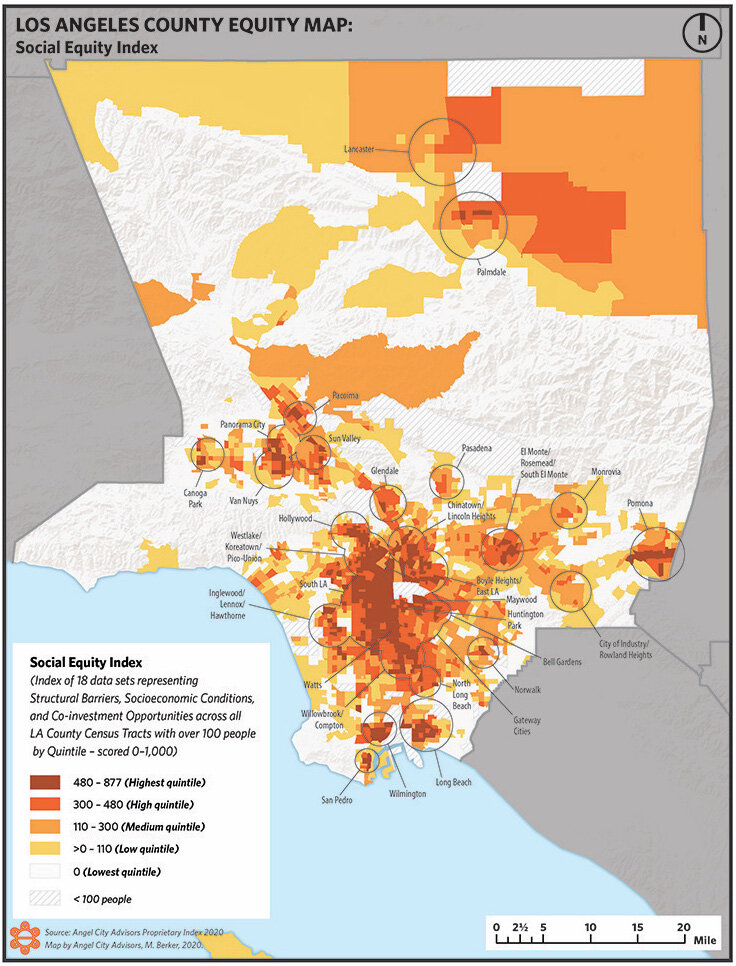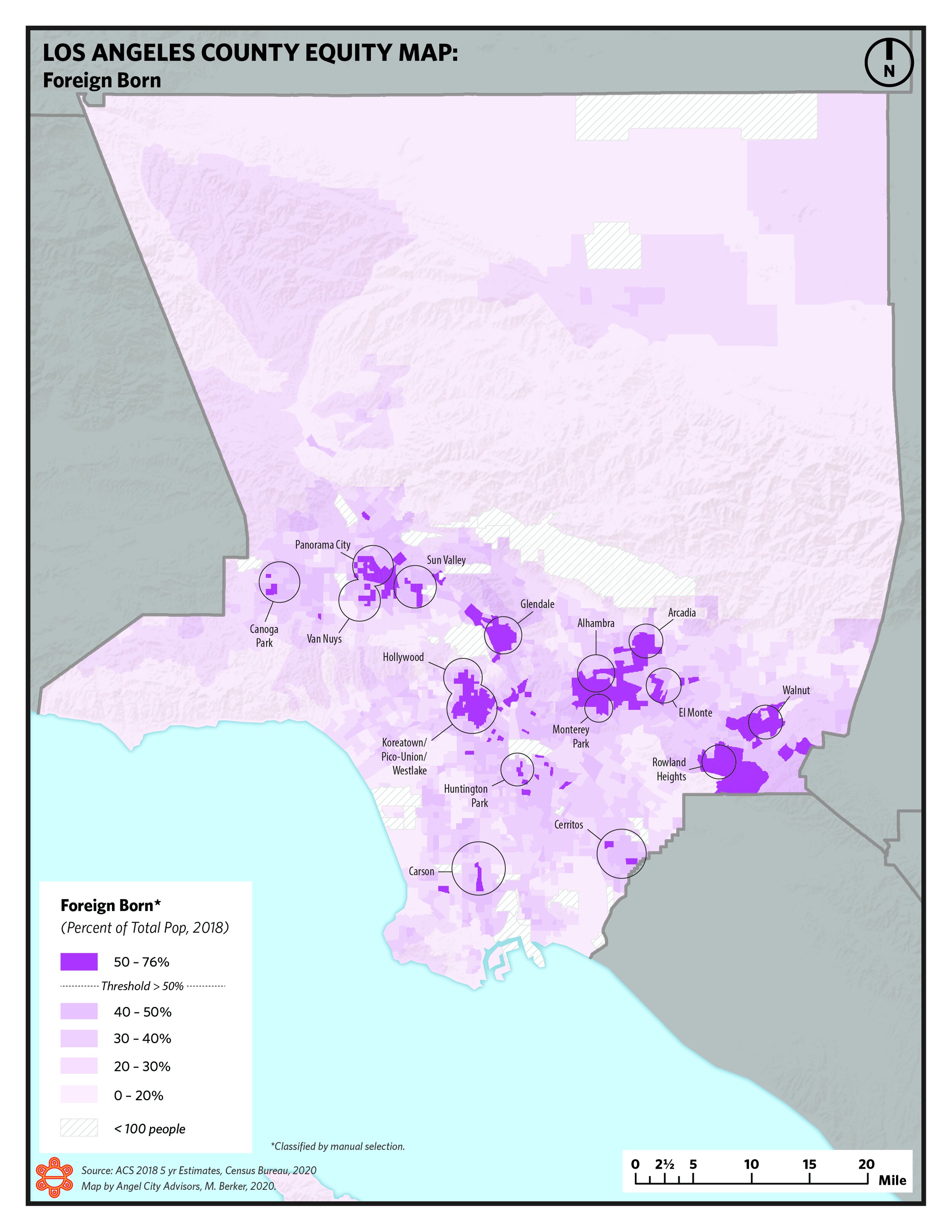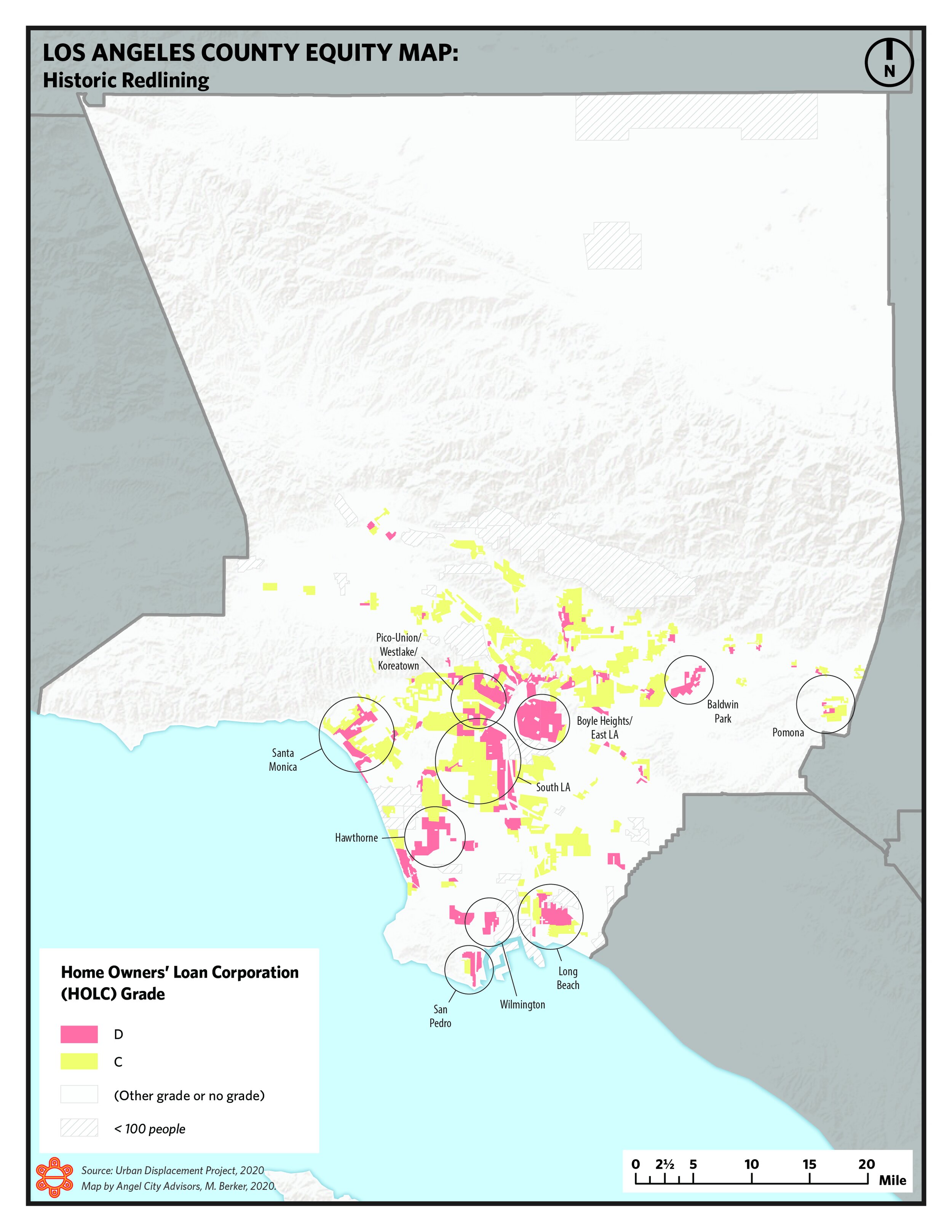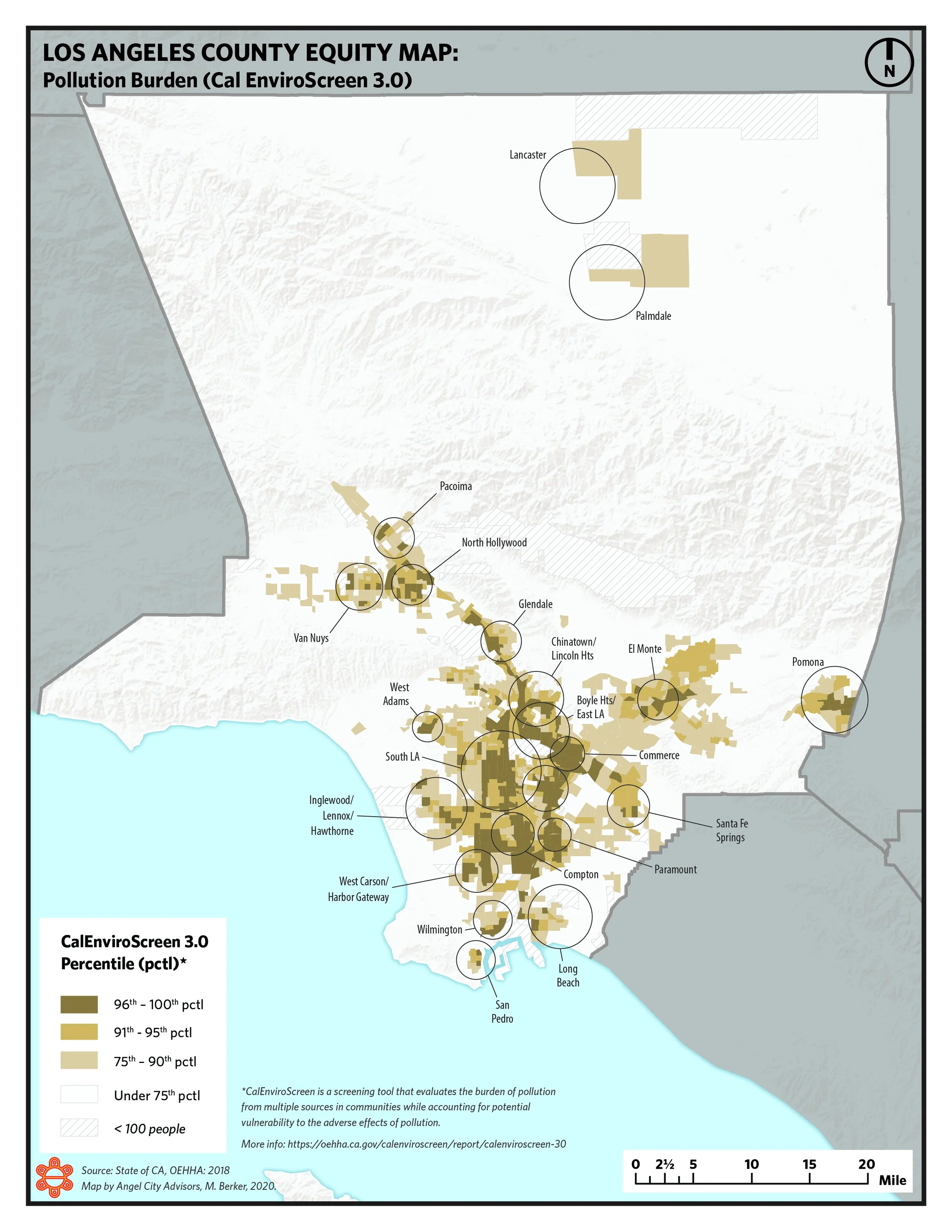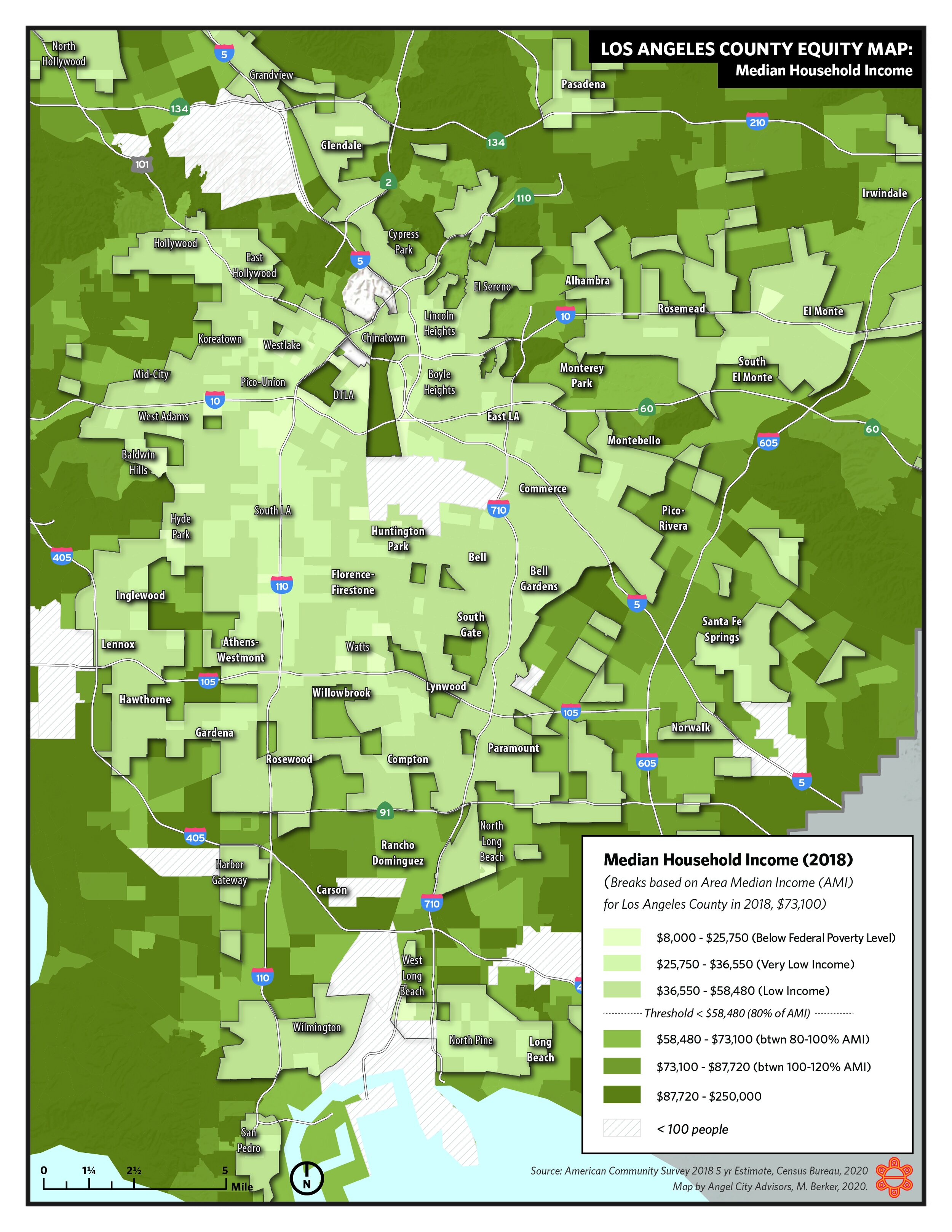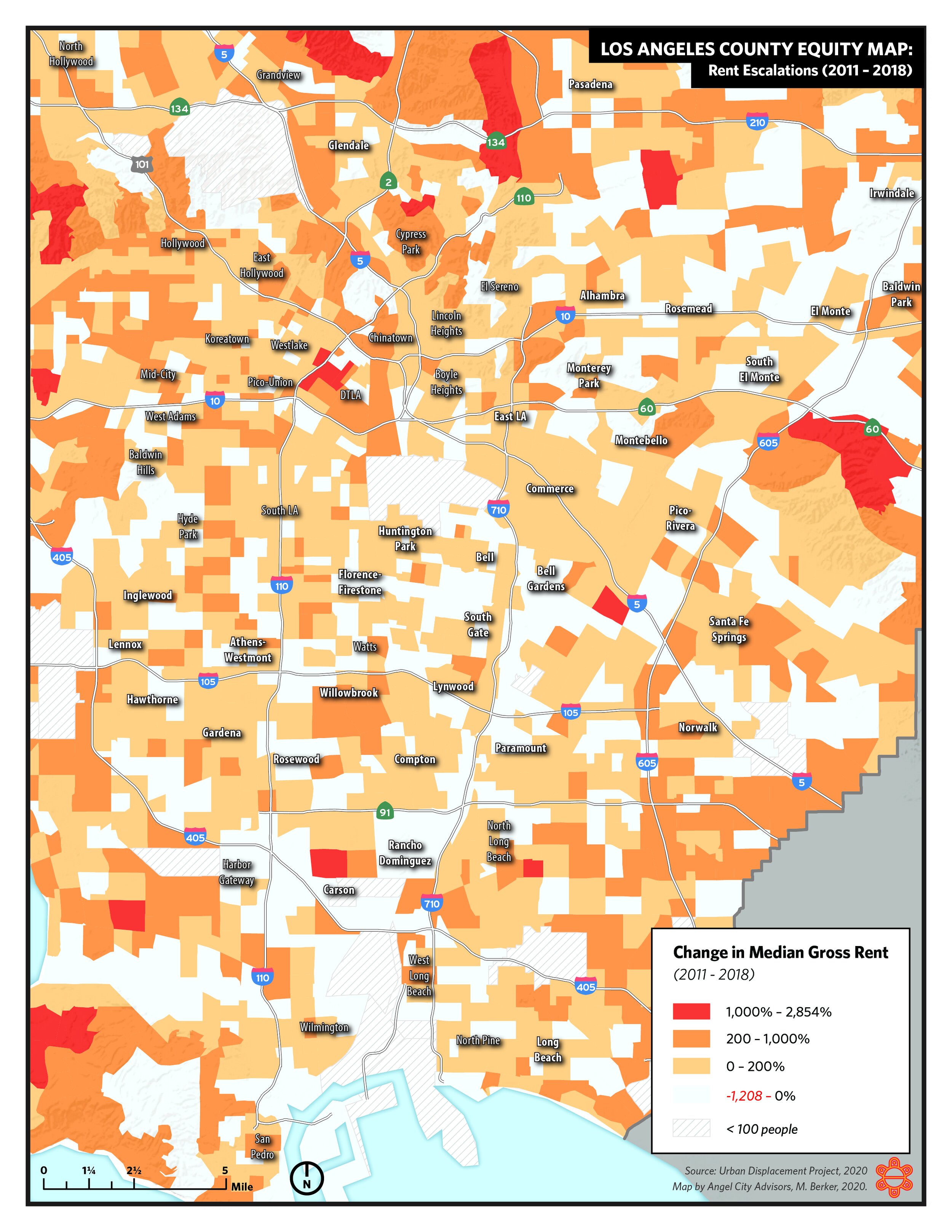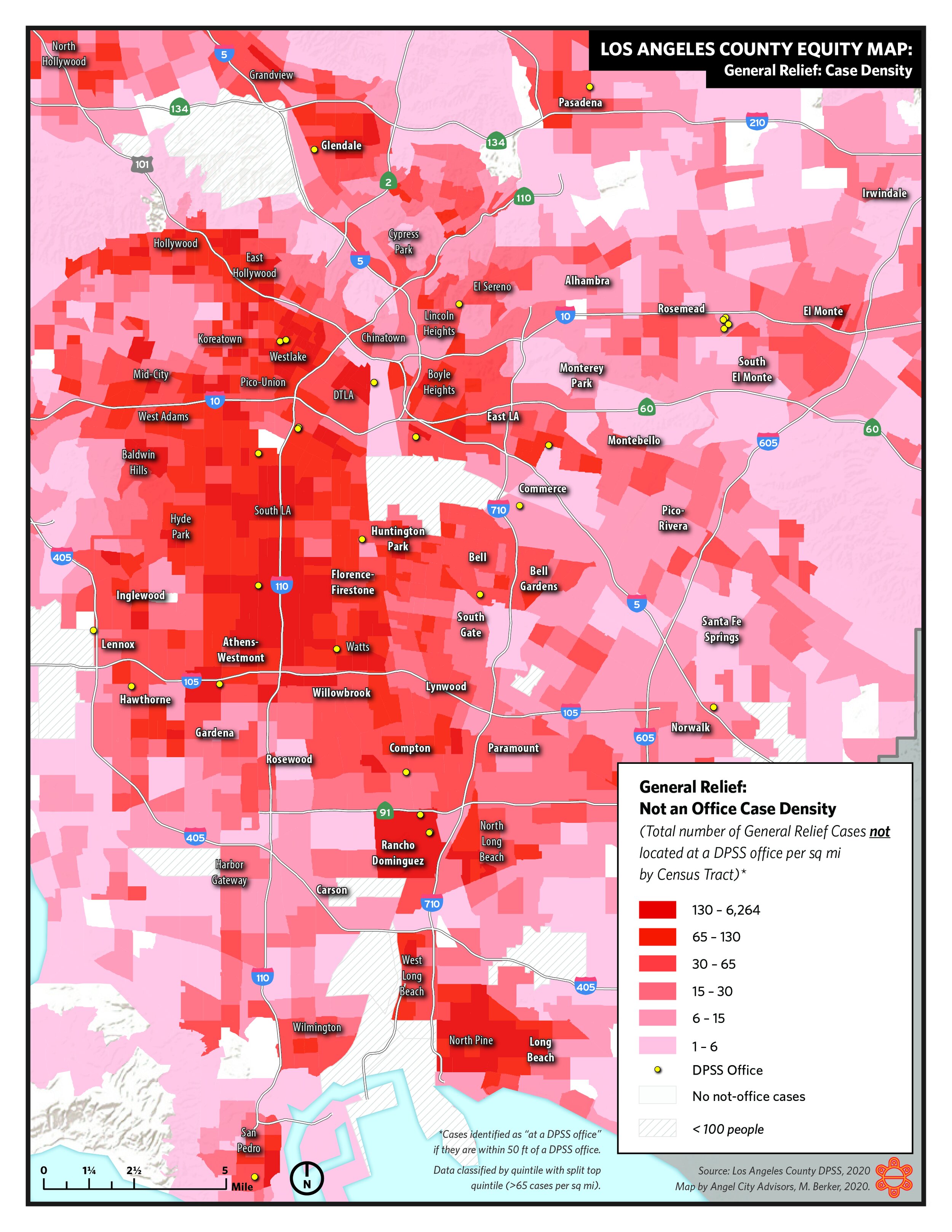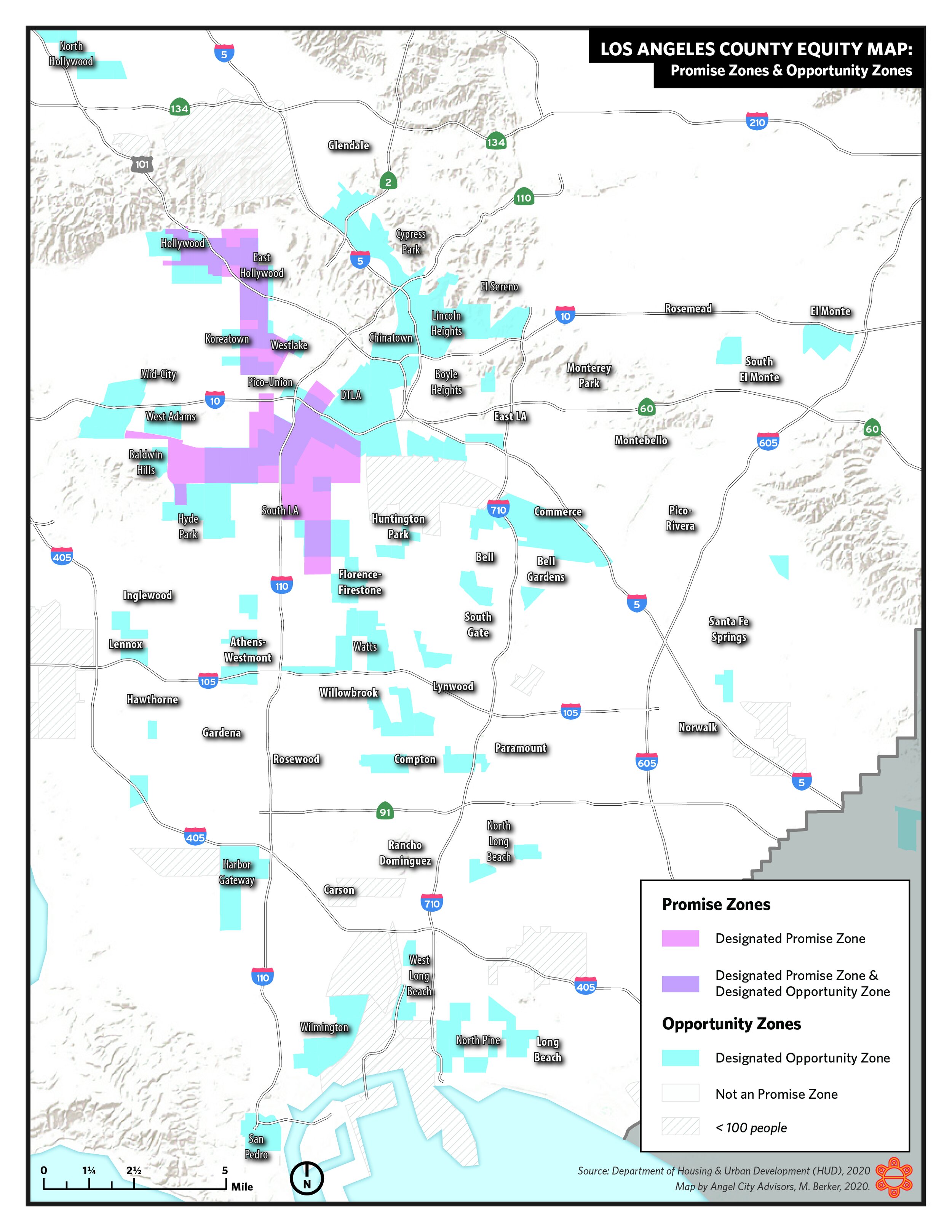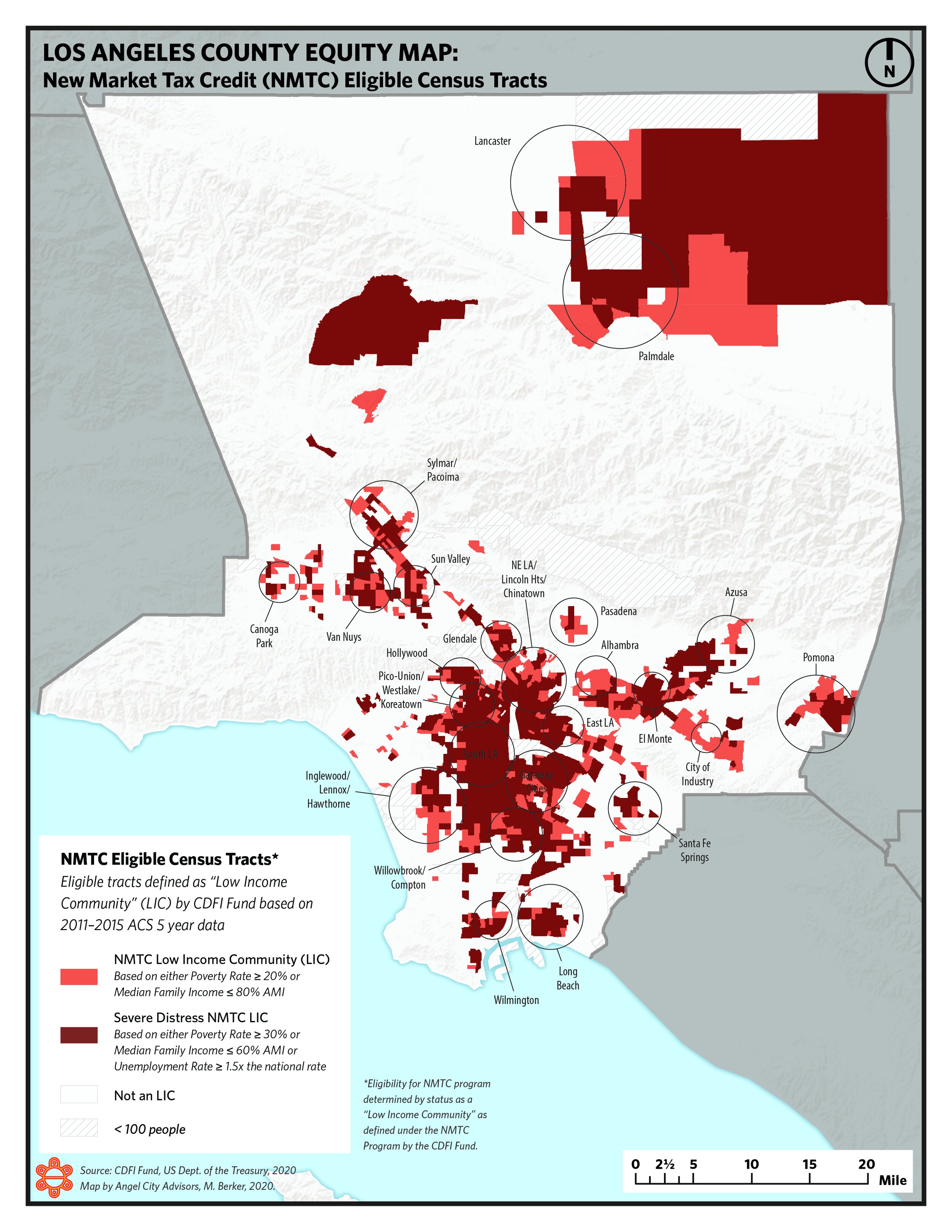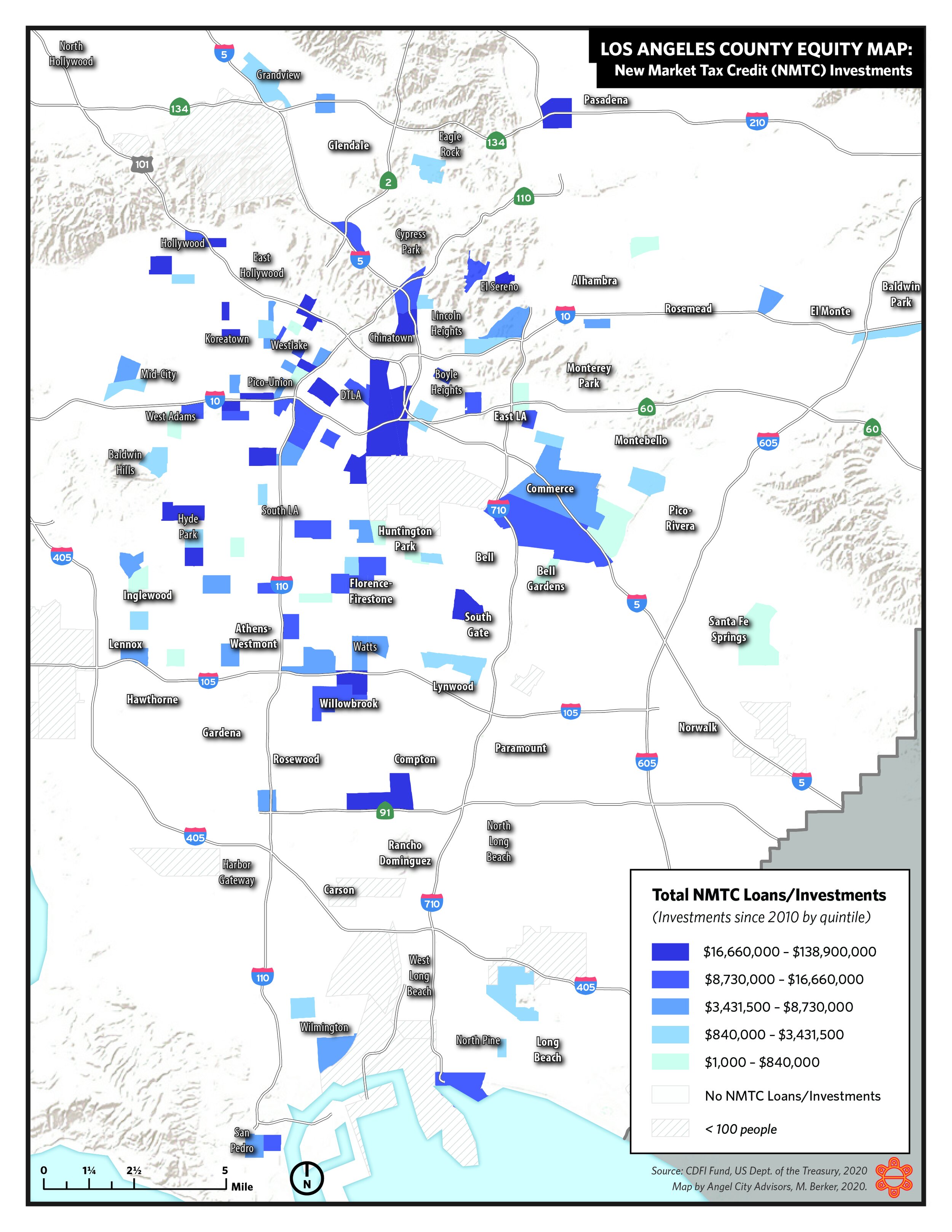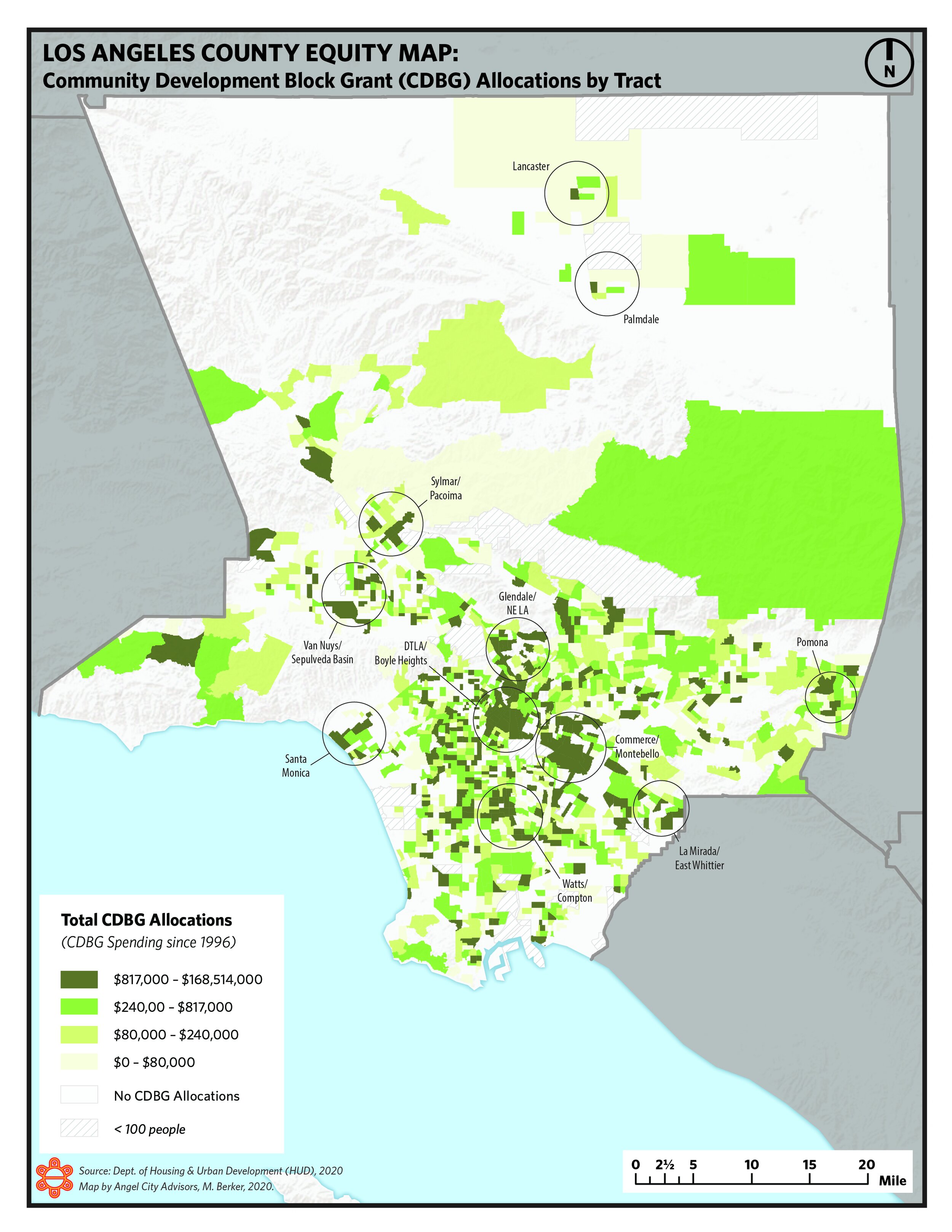
Los Angeles Equity Mapbook
We all must continue to fight injustice where we see it, and where we don’t.
For community benefit, Angel City is proud to offer the Los Angeles Equity Mapbook. The product is a collection of 79 maps that visualize injustice and exclusion across the Los Angeles County region. Since the national racial reckoning of 2020, we have been collecting various current County-wide data sets – some public, others not – and mapping them across our region. These maps are for you to use, cite, and ACT upon. We are currently working on an update to a newer underlying data set.
Mapbook Highlights & Context
Like most residents of Los Angeles, the team at Angel City Advisors was stunned, infuriated, and inspired by the events of 2020 and early 2021. We leapt to the instinctive, easy things – we marched, spoke out, donated, shored up allies, and confronted institutional agendas. We voted and worked to get out the vote. But racial injustice is embedded so deeply in America that we choose to act more fundamentally. It is a groundwater problem that must be confronted at the source. Angel City Advisors acknowledges that we operate in a unique chapter in history and we endorse the need for a Third Reconstruction that holds up a genuine multiracial democracy as its north star. We believe that bold intervention is required in the arenas of civil rights (such as criminal justice reform, expanded voting rights, and immigrants’ rights) as well as economic parity (such as wealth creation, education access, and housing access).
Our small Los Angeles firm helps connect capital and expertise to community voices, using data and our professional experience to design and execute investment strategy. So when we ask ourselves what resources, knowledge, and power we wield to confront structural racism and regional inequity, this capacity is our expertise. We offer this data without reservation to all changemakers.
We have also constructed a Social Equity Index that blends 17 of these variables into a single metric that was mapped across the Los Angeles region. In a more nuanced way, it shows which Los Angeles communities are unfairly impacted across multiple structural and current socioeconomic disadvantages. It also weights co-location with place-based investment opportunities. The Equity Index product was first submitted to the Los Angeles County CEO’s Office as part of ongoing economic development and resiliency efforts. With their partnership, it is now an open resource to everyone.
Our hope is that community activists, policymakers, funders, investors, and others will avail themselves of this data in making decisions about social policy, community investments, and resource allocations. Social change requires sustained, intentional effort - and clear, accurate information. Please use this information for good.
These data visualizations can be freely printed and downloaded individually or as an entire mapbook. The Social Equity Index can be printed as a wall map. We hope it is a new tool that can educate those with power, empower change agents, and help mitigate the racist policies and conditions that have been perpetuated in Los Angeles since its founding. Should you wish to promote the maps in your networks or continue the conversations, we are using the following social media hashtags:
#laequitymaps #angelcityadv #nogoingbackLA
High Resolution Content for Download
Click on each map photo to open a high resolution PDF map available to print, download, and use.
Structural / Immutable Disadvantages
This grouping of maps uses data to visualize conditions indicating structural disadvantages such as environmental (in)justice, racially concentrated poverty, linguistic isolation, redlining, and criminal (in)justice. We offer Countywide maps, as well as zoom-ins on the most impacted areas.
Foreign Born Populations, zoom-in
Current / Evolving Socioeconomic Disadvantage
This grouping of maps uses data to visualize more fluid conditions which may indicate neighborhood distress such as household income, educational attainment, unemployment, overcrowding, homelessness, and public benefit caseloads.
Co-Investment Opportunities
This grouping of maps uses data to visualize co-investment opportunities such as opportunity zones, promise zones, NMTC-eligible zones, Best Start, among others.
